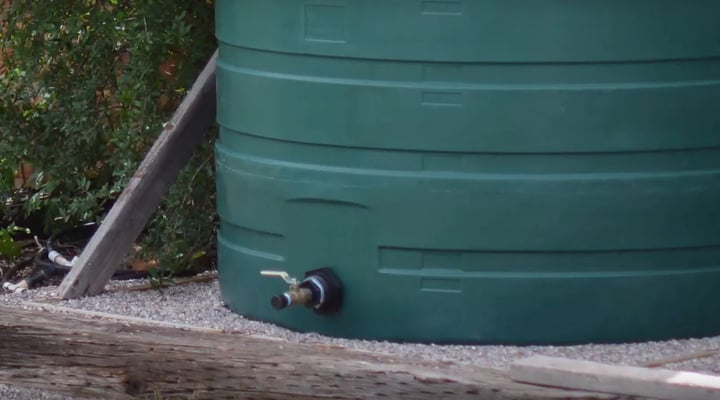
Taking the time to prepare a proper base for your water storage tank or rain harvesting tank is critical. I have heard horror stories of people's water tanks splitting and losing a lot of water due to the fact that they did not prepare their base correctly. In this article, you will learn the popular base types and which to choose for your application.
Types of Water Tank Bases:
- Sand: Sand is cheap but it has its challenges. If not supported correctly, it can run away very quickly during a storm or heavy rain.
- Pea Gravel: A solid option. Comes at a reasonable price and holds it shape a lot better than sand. Pea gravel also needs to be supported so it doesn't degrade over time. This option filters water a lot better than sand. I highly recommend this.
- Concrete: Is more expensive but will last the longest if constructed correctly. Looks neat and tidy. You may need to install drains depending on which way the water flows or how close it is to your house.
- Dirt/Clay: This is similar to using sand. If not supported correctly, it can run away very quickly during a storm or heavy rain.
6 Helpful Tips to Consider:
- If using concrete, remove rocks from the surface - Small and large rocks can puncture the bottom of any poly water storage tank. With water in the tank, this can create a lot of pressure on the base of the tank.
- Never use two bases for a single water tank - I have seen bad examples of this when customers have installed there tank half on concrete and half on dirt. The problem with this is when it rains, the dirt can wash away. This puts extra pressure on the base of the tank and can create cracks and splits.
- If using sand or dirt, make sure it is supported - Heavy rains can quickly wash away sand or dirt from under your tank. Ensure that there is good drainage around the tank and that the sand or dirt is supported with something like concrete, rocks or timber.
- Use rebar or mesh when pouring a concrete base - This will ensure the concrete is strong and will not break down over time. If you are unsure where to get this from or how to install it, speak to a concreting professional.
- When using sand, dirt or pea gravel, ensure the surface is compacted - A compacted surface will mean a level and an even surface. This will prevent any unneeded pressure being put on certain parts of the tank base.
- The base should always be level - As stated above, a level base is very important as it will keep the pressure even across the entire base of the water tank.
Watch this Video: Water Tank Base Tips
I trust these tips will help you prepare a proper base for your next water storage tank installation project. As I stated, it is so important that you spend extra time completing this step of the installation process as it will pay off over time. If you have any further questions, please comment below and I would be very happy to help.



